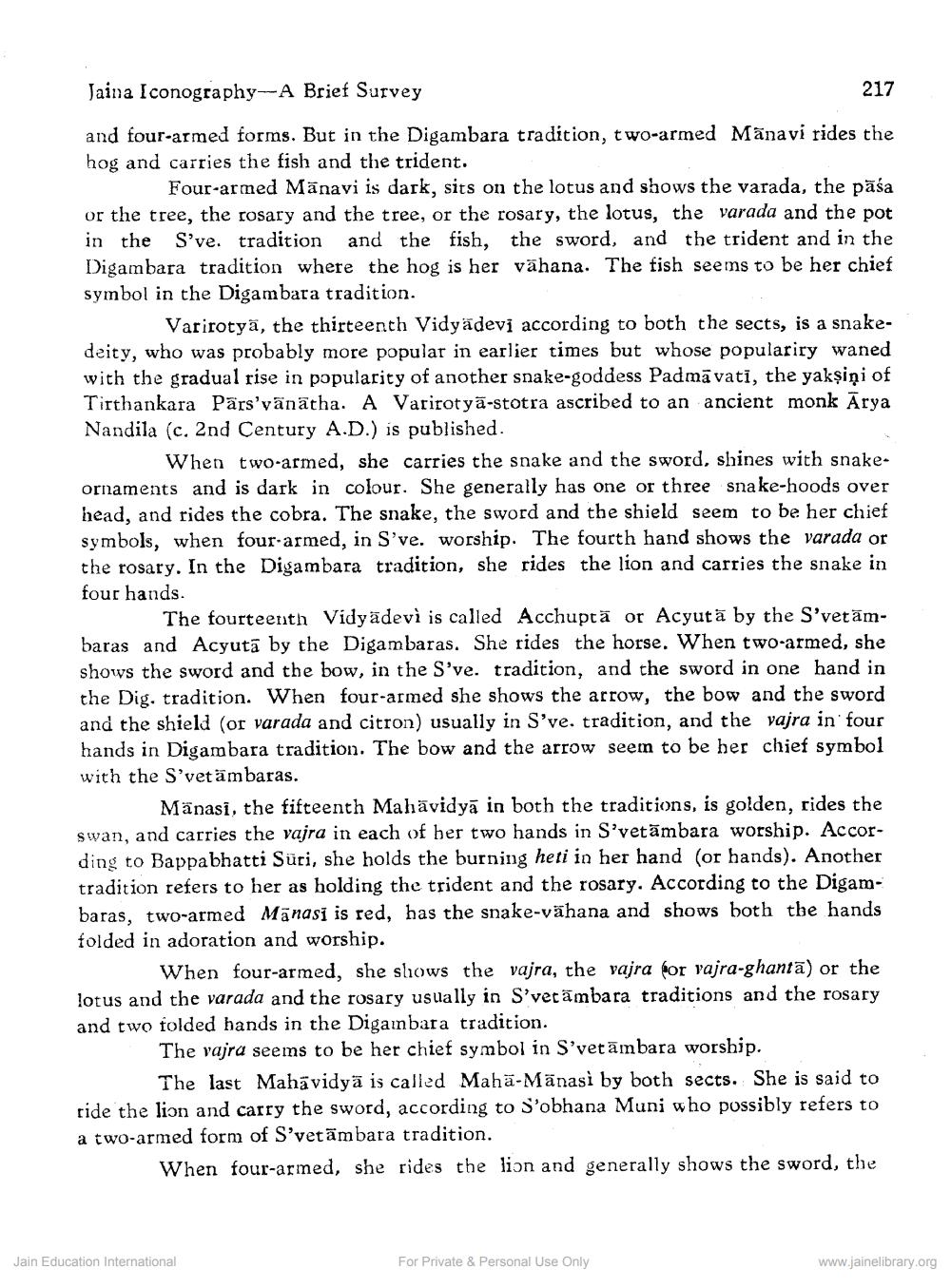________________
Jaina Iconography- A Brief Survey
217
and four-armed forms. But in the Digambara tradition, two-armed Mānayi rides the hog and carries the fish and the trident.
Four-armed Mānavi is dark, sits on the lotus and shows the varada, the pāśa or the tree, the rosary and the tree, or the rosary, the lotus, the varada and the pot in the S've. tradition and the fish, the sword, and the trident and in the Digambara tradition where the hog is her vähana. The fish seems to be her chief symbol in the Digambara tradition.
Varirotyā, the thirteenth Vidyadevi according to both the sects, is a snakedeity, who was probably more popular in earlier times but whose populariry waned with the gradual rise in popularity of another snake-goddess Padmavati, the yakşiņi of Tirthankara Pärs'vänātha. A Varirotyā-stotra ascribed to an ancient monk Ārya Nandila (c. 2nd Century A.D.) is published.
When two-armed, she carries the snake and the sword, shines with snakeornaments and is dark in colour. She generally has one or three snake-hoods over head, and rides the cobra. The snake, the sword and the shield seem to be her chief symbols, when four-armed, in S've. worship. The fourth hand shows the varada or the rosary. In the Digambara tradition, she rides the lion and carries the snake in four hands.
The fourteenth Vidyadevi is called Acchuptā or Acyut ä by the S'vetāmbaras and Acyutā by the Digambaras. She rides the horse. When two-armed, she shows the sword and the bow, in the S've. tradition, and the sword in one hand in the Dig. tradition. When four-armed she shows the arrow, the bow and the sword and the shield (or varada and citron) usually in S've. tradition, and the vajra in four hands in Digambara tradition. The bow and the arrow seem to be her chief symbol with the S'vetämbaras.
Mänasi, the fifteenth Mahävidya in both the traditions, is golden, rides the swan, and carries the vajra in each of her two hands in S'vetāmbara worship. According to Bappabhatti Süri, she holds the burning heti in her hand (or hands). Another tradition refers to her as holding the trident and the rosary. According to the Digambaras, two-armed Mānasi is red, has the snake-vähana and shows both the hands folded in adoration and worship.
When four-armed, she shows the vajra, the vajra for vajra-ghanta) or the lotus and the varada and the rosary usually in S'vecāmbara traditions and the rosary and two folded hands in the Diganbara tradition.
The vajra seems to be her chief symbol in S’vetāmbara worship.
The last Mahavidyä is called Mahā-Mānasi by both sects. She is said to ride the lion and carry the sword, according to S'obhana Muni who possibly refers to a two-armed form of S'vetämbara tradition.
When four-armed, she rides the lion and generally shows the sword, the
Jain Education International
For Private & Personal Use Only
www.jainelibrary.org




